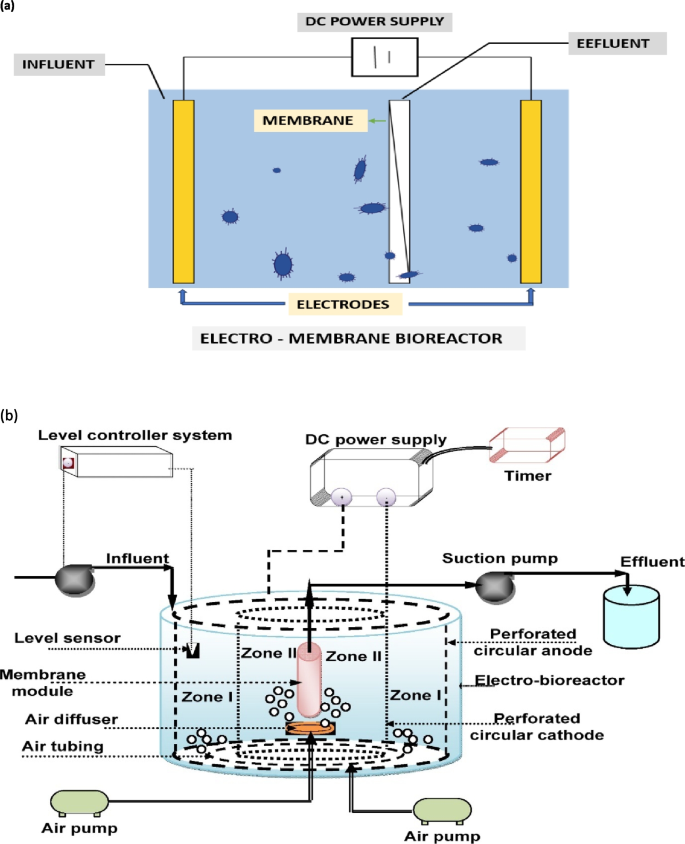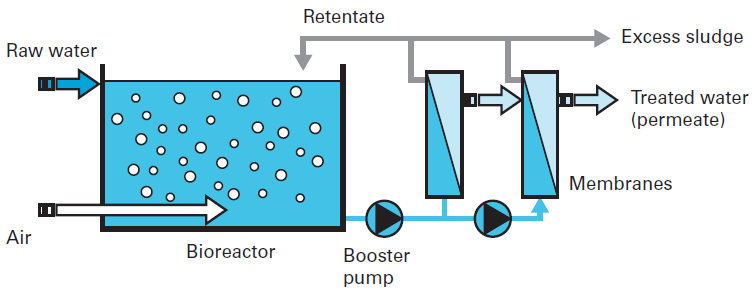Exploring the Environmental Impact of Membrane Bioreactor in Wastewater Treatment
Exploring the Environmental Impact of Membrane Bioreactor in Wastewater Treatment
Blog Article
Membrane Bioreactors Explained: Efficient Solutions for Clean Water
Membrane layer bioreactors (MBRs) have arised as an innovative service for addressing the pushing obstacles of wastewater treatment - Membrane Bioreactor. By incorporating organic procedures with sophisticated membrane filtration, MBRs not only improve the top quality of treated water yet additionally decrease the spatial demands of treatment centers.

What Are Membrane Layer Bioreactors?
Membrane layer bioreactors (MBRs) are sophisticated wastewater therapy systems that combine biological destruction processes with membrane filtration technology. This combination enables the efficient removal of impurities from water, making MBRs a recommended selection in various applications, consisting of community wastewater therapy and commercial effluent management.

Among the critical benefits of MBRs is their capability to generate top quality effluent, frequently ideal for reuse in irrigation or industrial processes. Furthermore, MBRs need a smaller impact contrasted to conventional therapy systems, making them ideal for metropolitan settings where room may be restricted.
Additionally, MBRs can effectively deal with differing influent loads and are less vulnerable to the results of harmful shocks. These characteristics contribute to their expanding appeal as a sustainable service for attending to the enhancing demand for clean water while minimizing ecological influences.
Just How Membrane Bioreactors Job
While the procedure of membrane layer bioreactors (MBRs) might appear complicated, it fundamentally revolves around the synergy between biological procedures and membrane filtration. MBRs integrate a biological therapy procedure, typically turned on sludge, with a membrane separation device to deal with wastewater effectively.
In an MBR system, wastewater is initial introduced right into a bioreactor where microorganisms deteriorate raw material and various other contaminants. The organic activity decreases the focus of toxins while promoting the development of biomass. Following this organic treatment, the mixed alcohol is subjected to membrane layer filtration, which can be microfiltration or ultrafiltration, relying on the desired effluent top quality.
The membranes work as a physical obstacle, enabling water and little solutes to pass while retaining suspended solids and larger molecules. This allows the system to preserve a high focus of biomass within the reactor, boosting the treatment efficiency.
Furthermore, the continual splitting up of cured water from the biomass facilitates a compact style and decreases the footprint of the treatment center. In general, the combination of organic deterioration and membrane filtering in MBRs leads to trustworthy and efficient wastewater therapy, ensuring premium effluent suitable for various applications.
Advantages of MBR Innovation
One of the vital benefits of membrane layer bioreactor (MBR) innovation is its capacity to generate high-quality effluent with a considerably minimized impact compared to conventional wastewater therapy techniques. MBR systems successfully combine biological therapy and membrane purification, causing premium elimination of pollutants, consisting of suspended solids, microorganisms, and raw material. This capacity results in effluent that typically satisfies or exceeds strict regulative criteria for reuse and discharge.
Furthermore, MBR modern technology permits higher biomass concentrations, which improves the therapy performance and lowers the needed activator quantity. This small layout is specifically advantageous in city areas where room is restricted. The functional versatility of MBR systems additionally means they can adapt to varying influent top qualities and circulation prices, making them ideal for a large range of applications.
Moreover, the minimized sludge production connected with MBR processes adds to reduce operational and upkeep expenses. The membranes work as a physical obstacle, decreasing the risk of obstructing and allowing longer operational periods in between cleaning. On the whole, the advantages of MBR technology make it an attractive service for sustainable wastewater therapy, dealing with both ecological problems and the demand for effective resource administration.
Applications of Membrane Bioreactors
With their adaptability and performance, membrane bioreactors (MBRs) find applications throughout various markets, including community wastewater treatment, commercial processes, and even water reclamation. In municipal setups, MBRs supply a small service for treating wastewater, successfully removing pollutants while at the same time creating high-quality effluent that fulfills rigid regulative standards. This makes them particularly suitable for locations with minimal room.
In commercial applications, MBR innovation is utilized for dealing with process water, specifically in industries such as food and beverage, drugs, and petrochemicals. These industries her response gain from MBRs' capacity to handle high natural tons and their effectiveness in recuperating useful sources from wastewater, such as nutrients and water.
Furthermore, MBRs play a crucial duty in water reclamation efforts, enabling the reuse of dealt with wastewater for irrigation, commercial processes, or perhaps as drinkable water after more treatment (Membrane Bioreactor). Their effectiveness in getting rid of pollutants and pathogens makes them a trustworthy selection for guaranteeing water quality in different reuse applications
Future of Water Therapy Solutions
The future of water treatment remedies is positioned for transformative developments driven by technical innovation and boosting environmental recognition. As global water scarcity ends up being a pushing problem, brand-new approaches, including membrane layer bioreactor (MBR) systems, are readied to play an essential role in enhancing the effectiveness visit their website and sustainability of water treatment processes.
Arising innovations such as artificial intelligence and maker learning are expected to maximize treatment operations, permitting real-time surveillance and predictive maintenance. This will certainly boost the general dependability and effectiveness of water treatment centers. Furthermore, advancements in membrane materials, such as graphene and nanofiltration, guarantee to enhance permeation rates and reduce fouling, causing lower energy intake and functional prices.
In addition, click to read the combination of renewable resource sources right into water therapy plants will contribute to greener techniques. The circular economic climate design will additionally obtain grip, urging the healing of important resources from wastewater, such as nutrients and energy.
Conclusion

Membrane bioreactors (MBRs) have actually emerged as a sophisticated solution for resolving the pressing obstacles of wastewater treatment. By integrating organic procedures with advanced membrane layer filtering, MBRs not just enhance the top quality of cured water yet additionally minimize the spatial demands of treatment centers.One of the crucial advantages of membrane layer bioreactor (MBR) innovation is its capability to produce high-quality effluent with a significantly minimized footprint contrasted to conventional wastewater therapy methods.With their adaptability and performance, membrane bioreactors (MBRs) locate applications across different fields, including metropolitan wastewater treatment, commercial procedures, and even water improvement.In conclusion, membrane bioreactors represent a substantial development in wastewater treatment technology, integrating biological processes with efficient membrane purification to produce top notch effluent.
Report this page